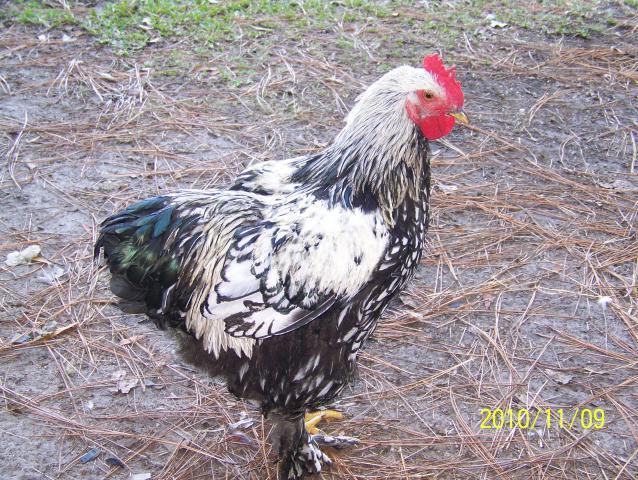- Feb 19, 2009
- 567
- 295
- 338
This is good information and all partridge cochin breeders need to have this to improve the type and size of their birds. Rudy, yes your birds looked smaller than the blacks and whites at the Shawnee show but this was due to lack of feather mass and overall type which is lacking in most partridge today. As far as color is concerned your males are spot on, the female that died on me a few days ago was also a spot on color bird that weighed about 9 lbs but didn't have the cushion or thigh fluff to give her that massive appearance of the blacks, whites and buffs. I have a male from Jim Kangas that is as large a male has I have seen and he is very typey but his color is weak (light), I currently have him in with the remaining pullet. I don't know if I'll try the black to partridge mating this year since I already have 200+ chicks out and feed is higher than gas right now.
Tom is right that you need to get the best black males or females you can find to improve the type, type is first all else is second. It would seem that the partridge is not completely recessive to the black if it causes colored males in the f1's which is why you can get pretty decent color in the f2's. This aspect is very promising in that, like the pullet Tom showed above, you may be able to get very good type and decent coloring in a relative short period of time.
Good discussion, let's keep it going.
Bo
Tom is right that you need to get the best black males or females you can find to improve the type, type is first all else is second. It would seem that the partridge is not completely recessive to the black if it causes colored males in the f1's which is why you can get pretty decent color in the f2's. This aspect is very promising in that, like the pullet Tom showed above, you may be able to get very good type and decent coloring in a relative short period of time.
Good discussion, let's keep it going.
Bo








